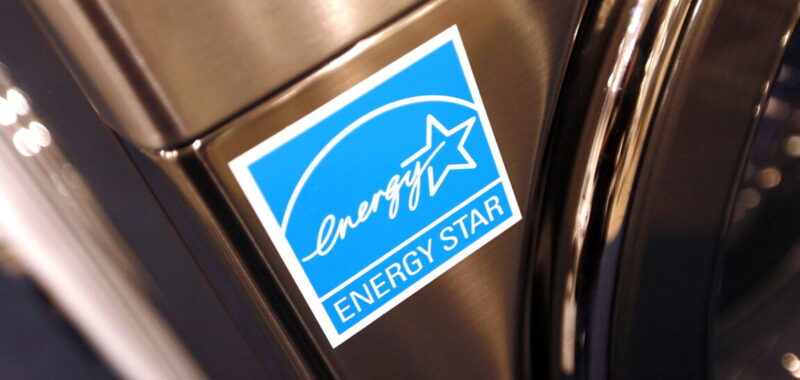
One of Bush’s “points of light”
Energy Star was first established under President George H.W. Bush’s administration in 1992, the year of the Earth Summit in Rio, where nations around the world first joined in a framework convention to address climate change.
That international treaty, at Bush’s urging, relied on voluntary action rather than targets and timetables for reducing greenhouse gas emissions. Back at home, the Energy Star program, too, was a way to encourage, but not force, energy savings.
“It was kind of one of his thousand points of light,” Nadel said. “He didn’t want to do serious things about climate change, but a voluntary program to provide information and let consumers decide fit very nicely into his mindset.”
At first focused just on personal computers, monitors and printers, Energy Star expanded over the years to cover more than 50 home appliances, from heating and air conditioning systems to refrigerators, washers and dryers and lighting. Beginning in 1995, Energy Star certification expanded to include homes and commercial buildings.
A Republican-controlled Congress wrote Energy Star into law in a sprawling 2005 energy bill that President George W. Bush signed. It is not clear that the Trump administration can eliminate the Energy Star program, which is administered by both EPA and the Department of Energy, without a new act of Congress.
In a report to mark the 30th anniversary of Energy Star in 2022, the Biden administration estimated the program had achieved 4 billion metric tons of greenhouse gas reductions by helping consumers make energy-efficient choices. Nadel said the impact in the marketplace is visible, as companies increase the number of product choices that meet Energy Star standards whenever a new standard is adopted by EPA through a public notice and comment process.
The nonprofit Alliance to Save Energy has estimated that the Energy Star program costs the government about $32 million per year, while saving families more than $40 billion in annual energy costs.
Eliminating the program, Nadel said, “is million-wise and billion foolish.”
“It will not serve the American people”
Word of Energy Star’s potential demise began to circulate weeks ago. On March 20, a wide array of manufacturers and industry associations signed on to a letter to Zeldin, urging him to maintain the Energy Star program.

